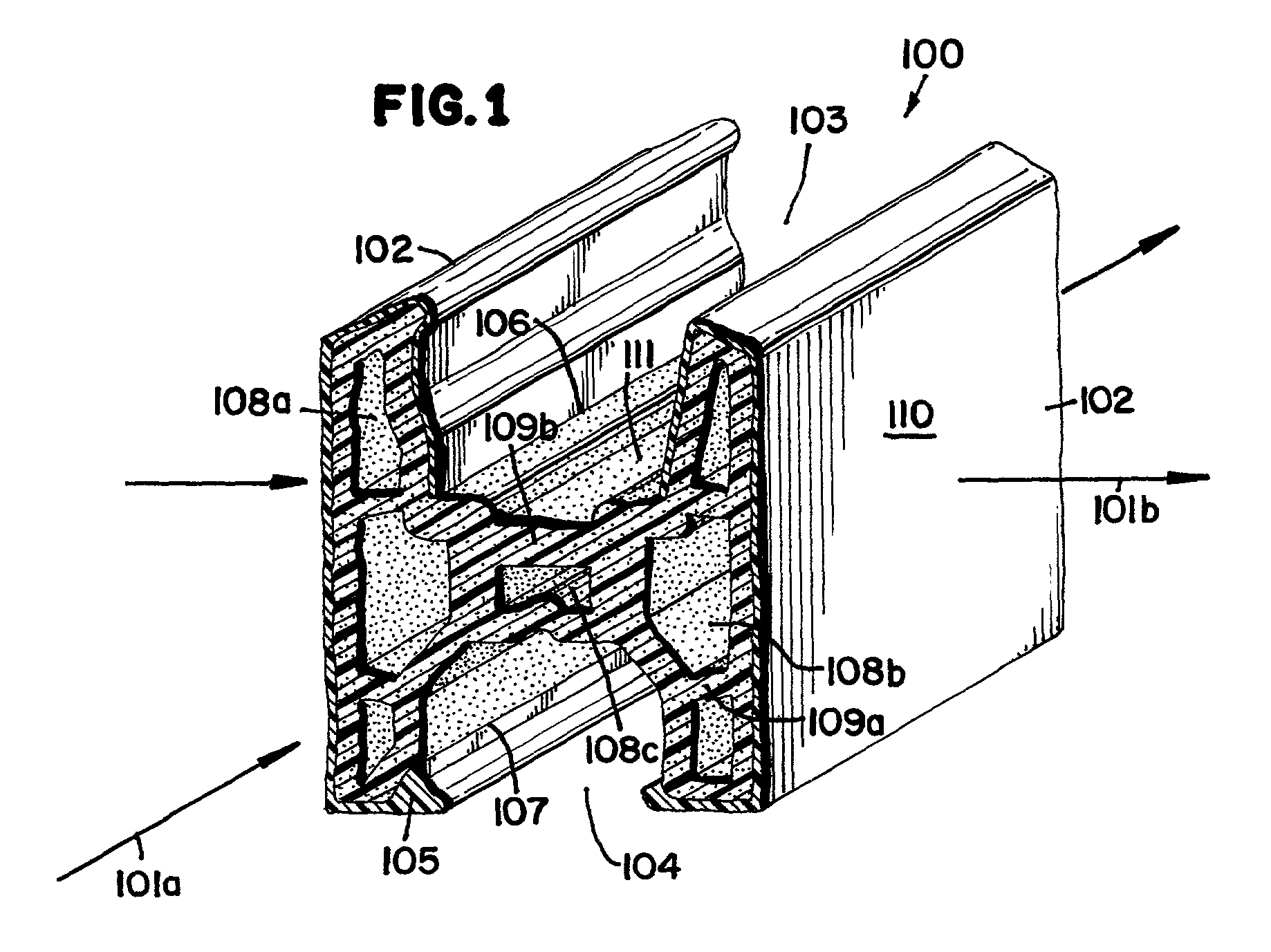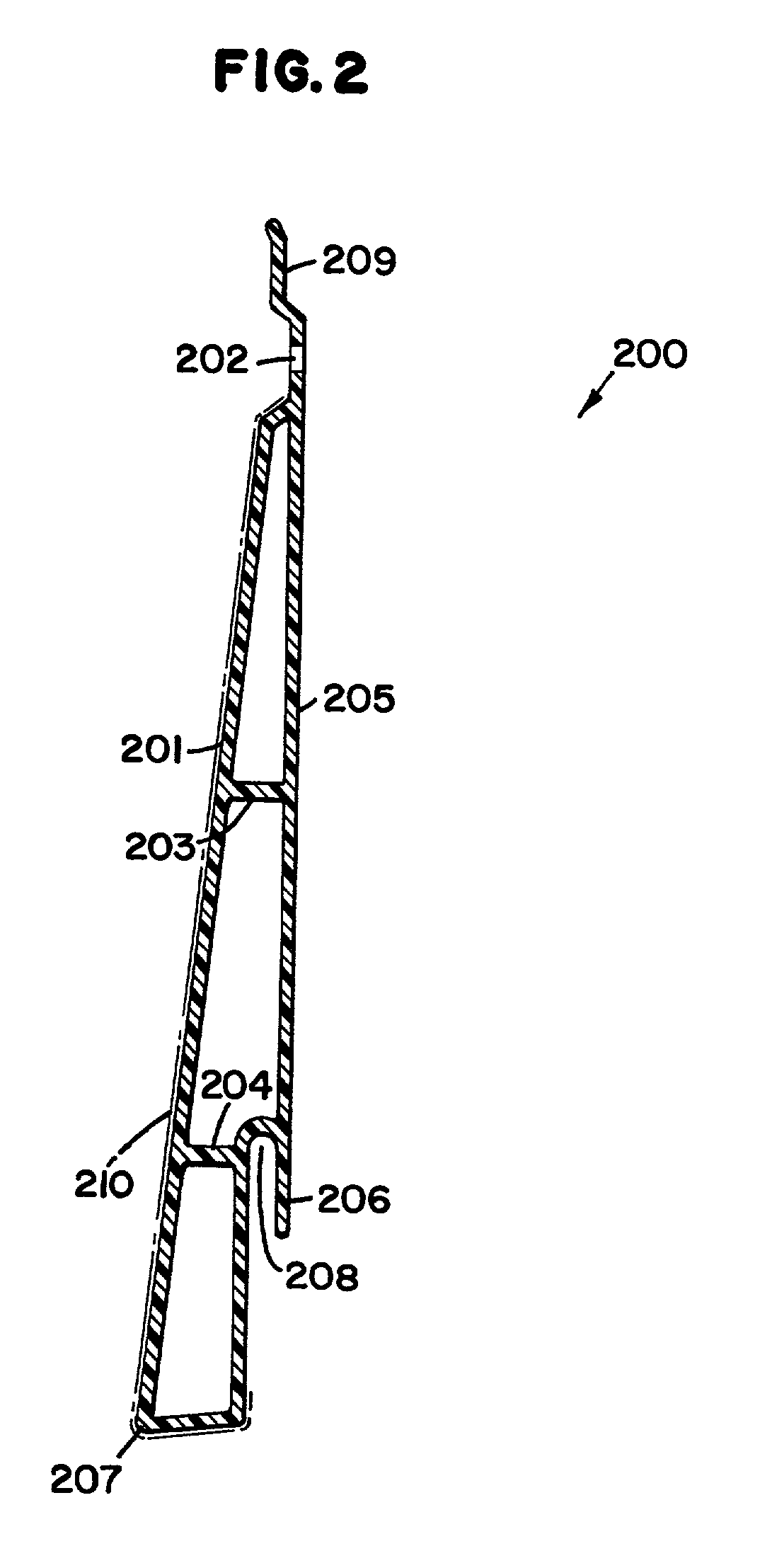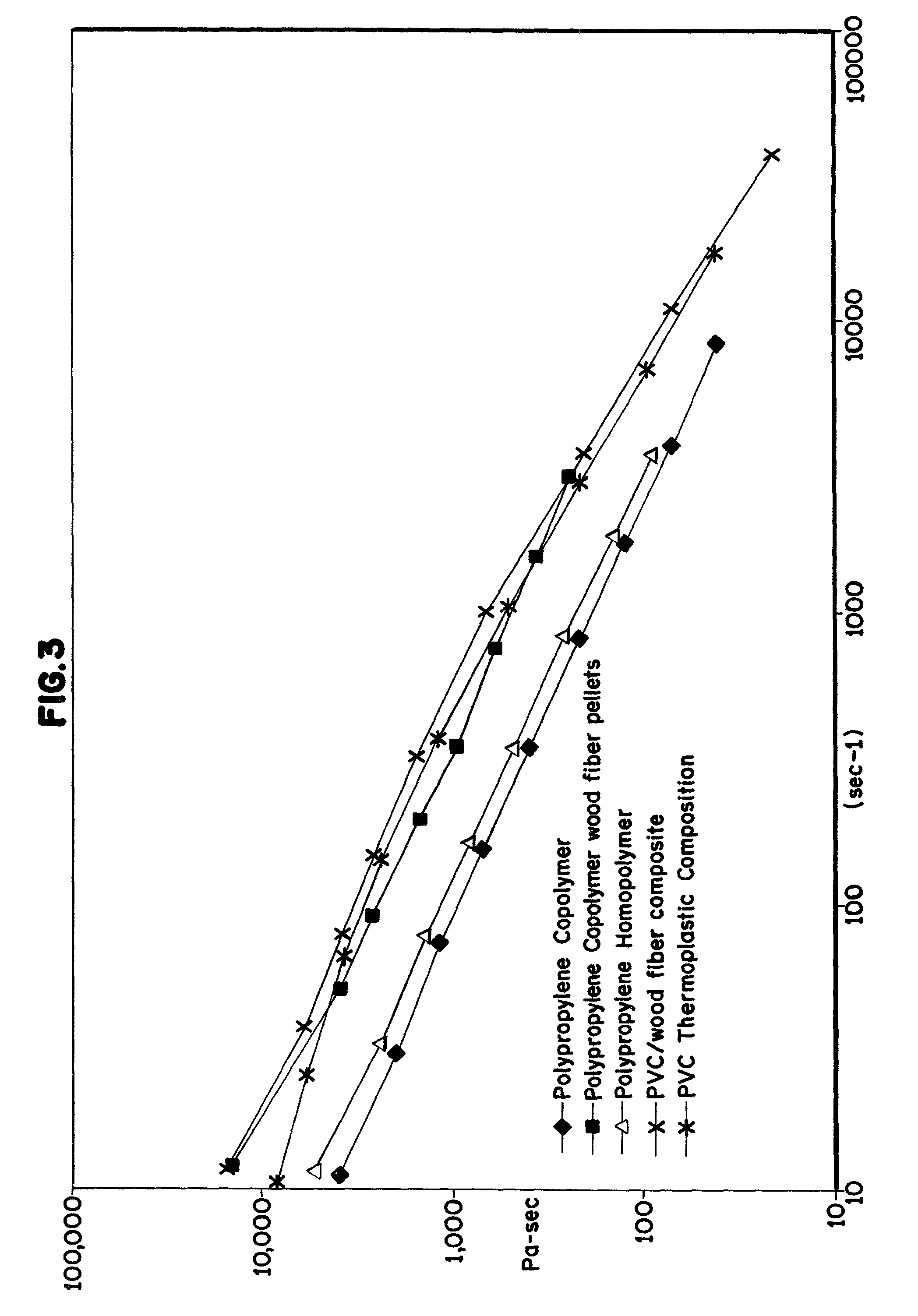Polyolefin wood fiber composite
a polyolefin wood fiber and composite technology, applied in the field of polyolefin wood fiber composite, can solve the problems of increasing the tendency of clumping, lowering the temperature, and non-uniform distribution of fibers within the matrix, and achieves the effects of improving the resistance to insect attack, improving the resistance to water absorption, and low heat transmission ra
- Summary
- Abstract
- Description
- Claims
- Application Information
AI Technical Summary
Problems solved by technology
Method used
Image
Examples
Embodiment Construction
[0016] The invention resides in an advanced composite and in a thin wall complex hollow profile manufactured from a polyolefin preferably polypropylene / wood fiber composite material. The composite has improved mechanical, chemical and weatherability properties rendering it ideal for use in institutional and residential construction materials. The profile can be used in virtually any structural or trim application.
[0017] The composite, comprising a polyolefin, preferably polypropylene, combined with the wood fiber materials preferred for use in the invention, have improved impact resistance, improved flexural and tensile moduli, improved heat distortion temperature, and reduced brittle character. Newer polyolefin polyethylenes or polypropylenes are made using metallocene catalyst technology. Metallocene catalysts are typically single sited catalysts (i.e., they have one or more identical active sites per molecule). Such catalyst consistency results in improved molecular weight distri...
PUM
| Property | Measurement | Unit |
|---|---|---|
| melting point | aaaaa | aaaaa |
| particle size | aaaaa | aaaaa |
| heat distortion temperature | aaaaa | aaaaa |
Abstract
Description
Claims
Application Information
 Login to View More
Login to View More - R&D
- Intellectual Property
- Life Sciences
- Materials
- Tech Scout
- Unparalleled Data Quality
- Higher Quality Content
- 60% Fewer Hallucinations
Browse by: Latest US Patents, China's latest patents, Technical Efficacy Thesaurus, Application Domain, Technology Topic, Popular Technical Reports.
© 2025 PatSnap. All rights reserved.Legal|Privacy policy|Modern Slavery Act Transparency Statement|Sitemap|About US| Contact US: help@patsnap.com



